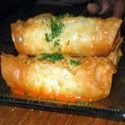Grocery Shopping: Stretching the Dollar
Make a list before you shop
Making a grocery list before you leave the house will not only help you remember which items you need, but it will also lower your chances of buying unnecessary items. Stick to the list. Don’t buy things you don’t need.
Eat before you shop
People tend to buy more food when they’re hungry so make sure you don’t shop on an empty stomach. Eat before you go.
Buying in bulk is not always cheaper
Although the concept seems logical, buying in bulk is not always the cheaper solution. It’s important for people to comparison shop to make sure they are actually getting the better deal. The bigger item might actually be more expensive than the regular size product. It’s always a good idea to compare the cost per unit of food items. Another thing to consider is whether or not you will be able to finish the bulk item before it goes bad. What good is buying more food for a cheaper price when you’re just going to throw it out?
Buy store brands
Purchase the generic store brands for certain food items such as salt, flour, hamburger/hot dog buns, and condiments.
Plan your meals ahead of time
Planning your meals for the week will also help you generate a more efficient grocery list. Check your pantry and refrigerator to see what items you already have, and then create your menu around those items.
Take advantage of coupons and “on sale” items
The savings gained from coupons may seem small, but those cents and dollars can definitely add up. However, be sure to use coupons only on necessary items. Don’t buy products just because you have a coupon for it. Buy it if it’s an item you would normally purchase, or if it’s part of your menu that week. Take advantage of products that are advertised on sale in your newspaper ad. Some of these items can be purchased in larger quantities, and then frozen for future use.
Check high and low on the grocery shelves
Grocery stores will strategically place more expensive brand name products at eye-level. The more inexpensive (and often times healthier) products are located higher or lower on the shelves. Be sure to check around before making your decision on a product.
Shop around the perimeter of the grocery store first
The perimeter of the grocery store is generally where more of the essential and healthier food items, such as vegetables, fruits, bread, meat, and diary are located. It’s a good idea to shop the perimeter first, and then go back to individual aisles to pick up the rest of the items on your list. Walking through all of the aisles increases your chances of buying unnecessary products.
Don’t purchase convenience items
Those precut fruits and vegetables, ready-made salads, and precut and marinated meats may save you extra time and make your life a little easier, but don’t think it doesn’t come without a price. Those convenience items can cost almost twice as much as the unprepared versions. Don’t be lazy: prepare your own food.
Become a member
Becoming a card member at your grocery store (or even several different grocery stores) is usually free, and can offer additional savings. In addition to more coupons, card members will also have the added benefit of purchasing certain items at a discounted price.
Eat seasonally and locally
Eating seasonally and locally grown products is not only healthier, but also more economical. In addition, eating seasonally also helps support your local growers and farmers.
If you have any other tips for saving on groceries, feel free to share by leaving a comment!




0 comments
Post a Comment